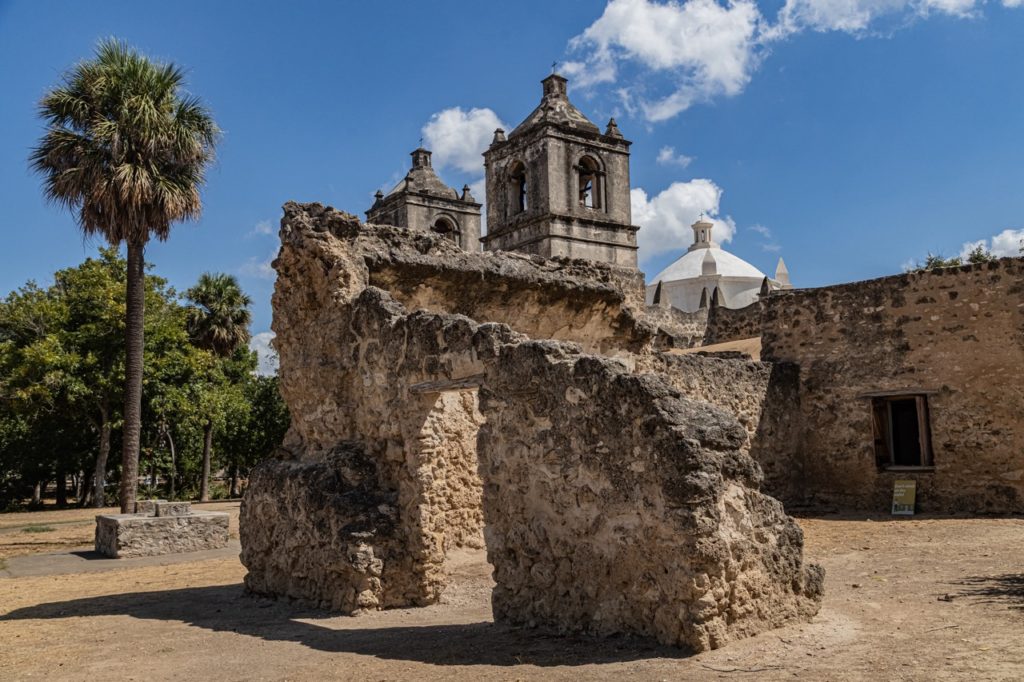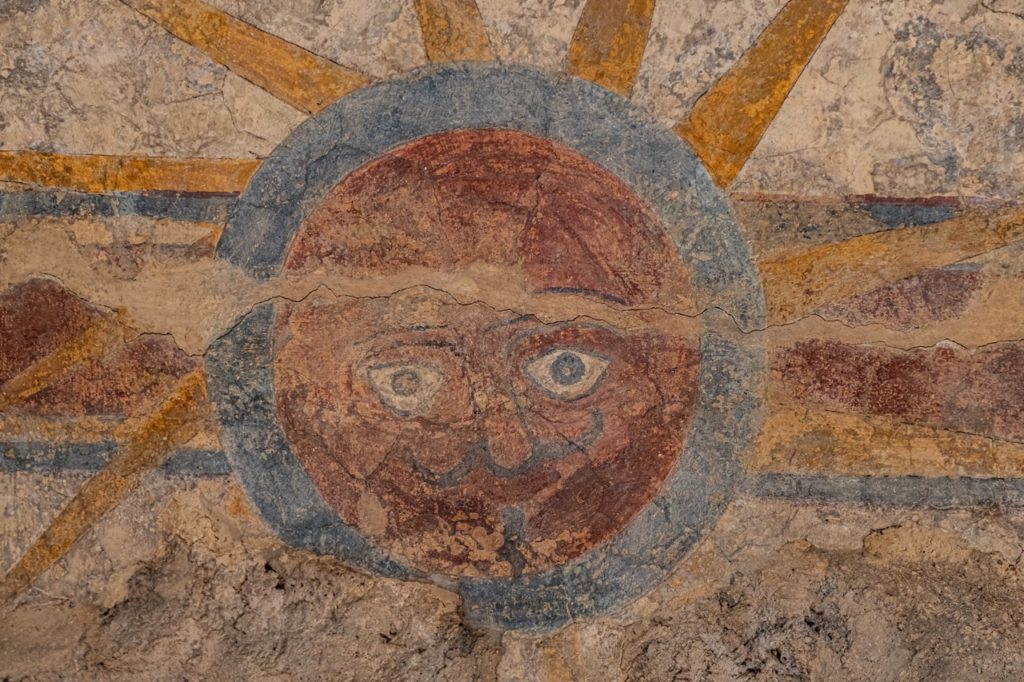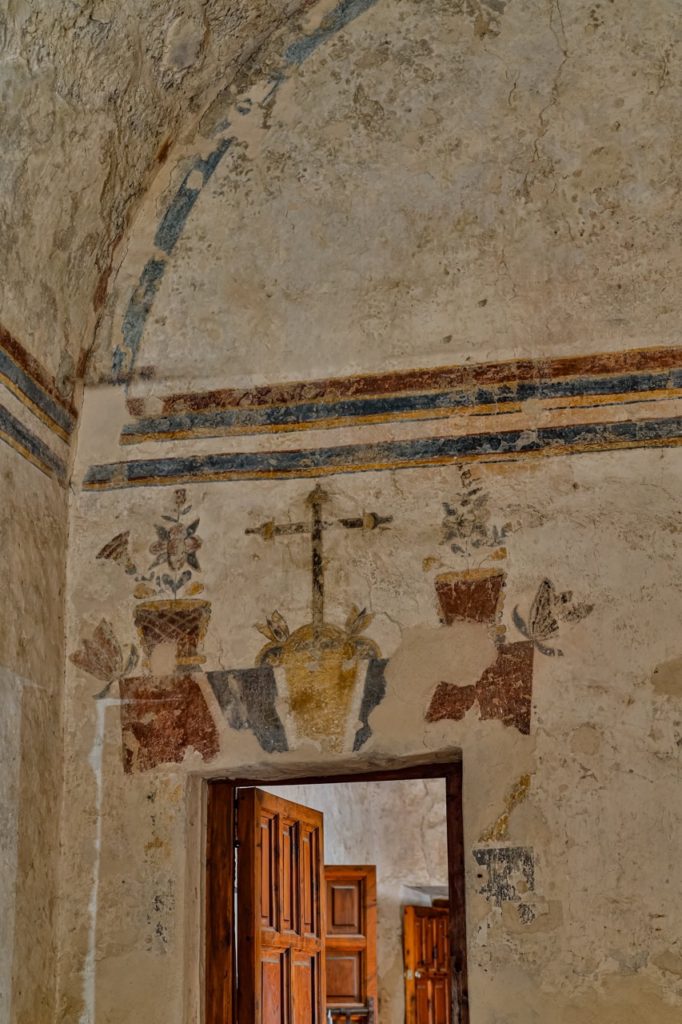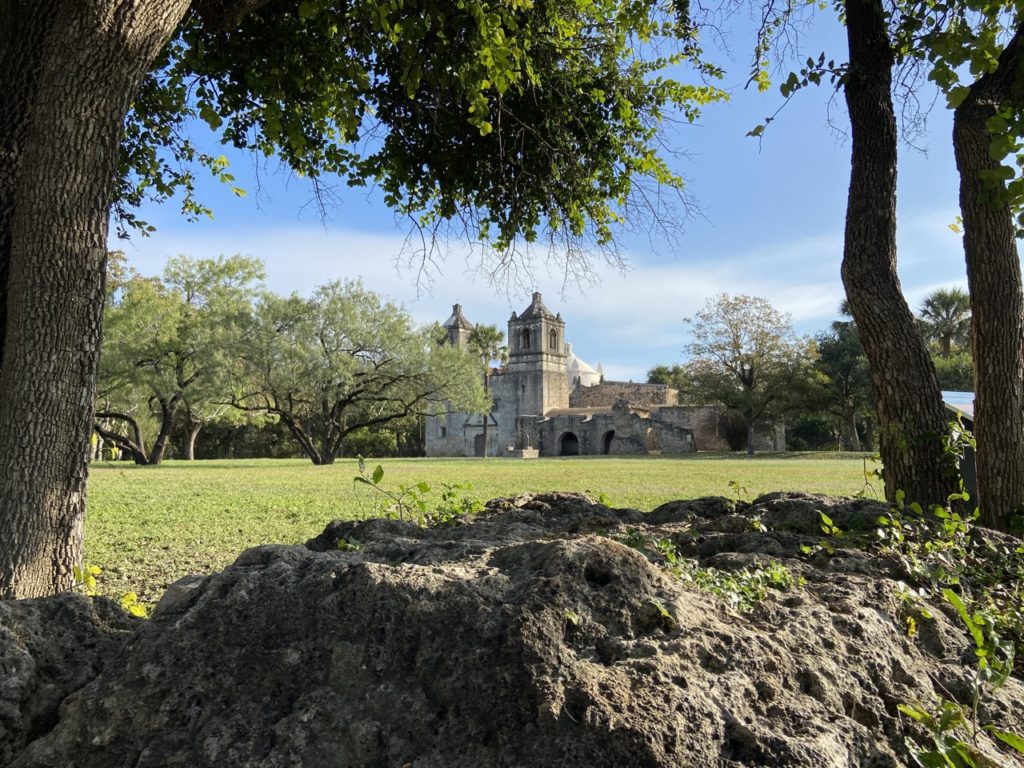American Treasure: Mission Concepción
Words: Chantelle Ruidant-Hansen, Park Ranger at San Antonio Missions National Historical Park
Photos: As Noted
Mission Concepción (Mission Nuestra Señora de la Purísima Concepción de Acuña) was originally established in East Texas as “Nuestra Señora de la Purísima Concepción de los Hainais” in 1716 and moved the mission community to its present site in 1731. The mission was built on the ancestral lands of the Hainai Indigenous group, one of the leading Caddoan groups, which was collectively called the Tejas by the Spaniards. The mission served the Hainai or Tejas people. Temporary housing and chapels were built in adobe-style “jacales” around the new mission but with drought, disease, and long distance from more established New Spain communities in what is today Mexico, the mission soon was relocated to a more suitable location.
On March 5, 1731, Mission Concepción was re-founded on the east bank of the San Antonio River, about halfway between the already existing missions of San Antonio de Valero (the Alamo) to the north and Mission San José to the south. Indigenous groups from various, mostly Coahuiltecan bands, were brought into the new Queretaran mission. Construction started with temporary adobe-style buildings, and digging of the irrigation ditches or “acequias” was the first priority. The adobe buildings were gradually replaced by stone structures from limestone quarried right in front of the mission. This limestone quarry is visible today.
 Mission Concepción: Perspective From Limestone Ruins (NPS Photo/Andrew Shirey)
Mission Concepción: Perspective From Limestone Ruins (NPS Photo/Andrew Shirey)
The mission church took about 15 years to build and was dedicated in 1755. It appears very much as it did over two centuries ago. Due to the fact that it was built directly on bedrock, it never lost its roof or its integrity. It remains the least restored of the colonial structures within the park. It is considered to be the oldest unrestored church in the United States.
Mission Community
The mission is a community and more than a church. During the colonial era, stone perimeter walls fortified the mission. Workshops for blacksmiths, carpenters, and weavers were busy with activity, and adobe structures lined the walls for the 200 or so Indigenous mission residents. Each mission also had a ranch and farm outside the mission’s limestone walls. The ranch was about 30 miles away and well-stocked with sheep, goats, cattle, and horses. The mission farmlands were irrigated by miles of ditches, hand-dug by the Indigenous mission residents. The mission’s location off of the San Antonio River was vital for its survival. These Acequias flowed from the river to the farm fields and, alongside the mission, and then back into the river.
Building Materials
Limestone quarried from the banks of the San Antonio River and in front of Mission Concepcion was the main material used in the construction of the church, perimeter walls, granary, and Convento structure. The Convento is the housing, offices, and library for the Franciscan priests and friars that ran the mission community. Lime kilns were used to heat the limestone to produce both plaster and mortar for the mission buildings.
Original Art
Part of its original design, colorful yellow, red and blue geometric designs covered the church facade over its white lime plaster. The patterns have long since faded or been worn away, but small details are still visible. Original frescos are still visible inside the church and inside the Convento structure. These bright fresco designs are examples of the blending of Indigenous and Spanish cultures, with images of Christian iconography, as well as more native figures such as the sun.
 Sun Fresco Inside Convento at Mission Concepción (NPS Photo/Andrew Shirey)
Sun Fresco Inside Convento at Mission Concepción (NPS Photo/Andrew Shirey)
 Altar Fresco Inside Convento at Mission Concepción (NPS Photo/Andrew Shirey)
Altar Fresco Inside Convento at Mission Concepción (NPS Photo/Andrew Shirey)
World Heritage Site
The five San Antonio Missions, together with their associated irrigation, agricultural features, and Mission Espada’s Spanish-colonial ranch, were designated a UNESCO World Heritage site in 2015. This rare honor has been bestowed upon only 24 sites in the United States. The mission is the first and only World Heritage Site in Texas. The church structures within San Antonio Missions National Historical Park are still active Catholic parishes and are owned and operated by the San Antonio Archdiocese.
Land and Water Acknowledgement - San Antonio Missions National Historical Park (U.S. National Park Service) (nps.gov)
 Mission Concepción From The Limestone Quarry (NPS Photo/Chantelle Ruidant-Hansen)
Mission Concepción From The Limestone Quarry (NPS Photo/Chantelle Ruidant-Hansen)
 Limestone Structure at Mission Concepción (NPS Photo)
Limestone Structure at Mission Concepción (NPS Photo)
 Interior of Mission Concepción Church (NPS Photo)
Interior of Mission Concepción Church (NPS Photo)
 Mission Concepción (NPS Photo)
Mission Concepción (NPS Photo)